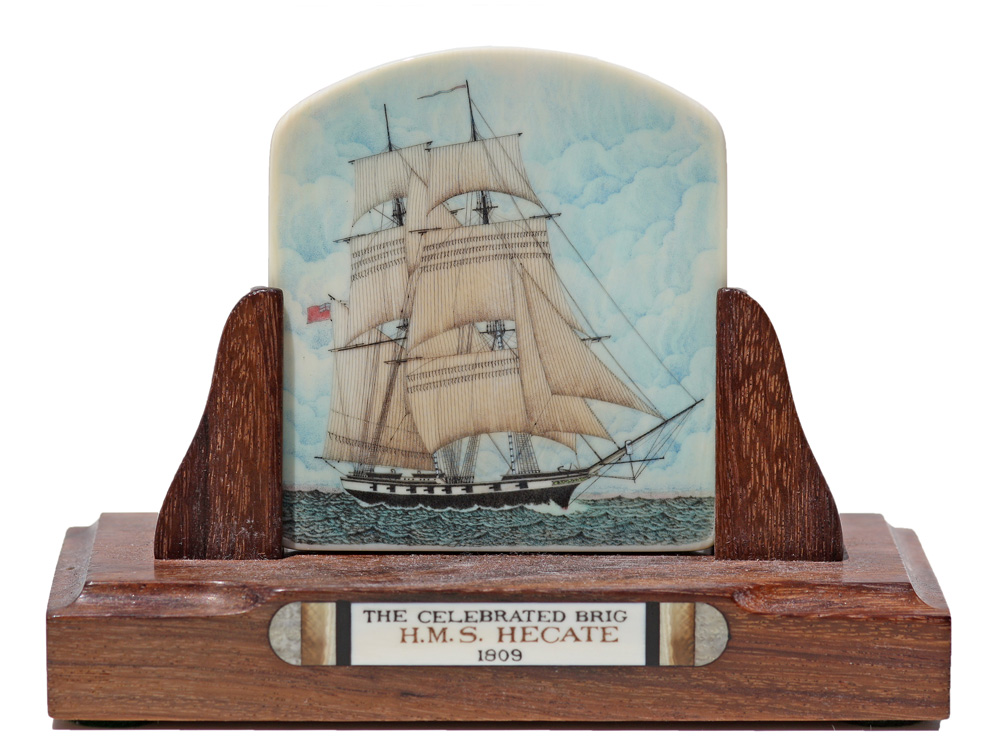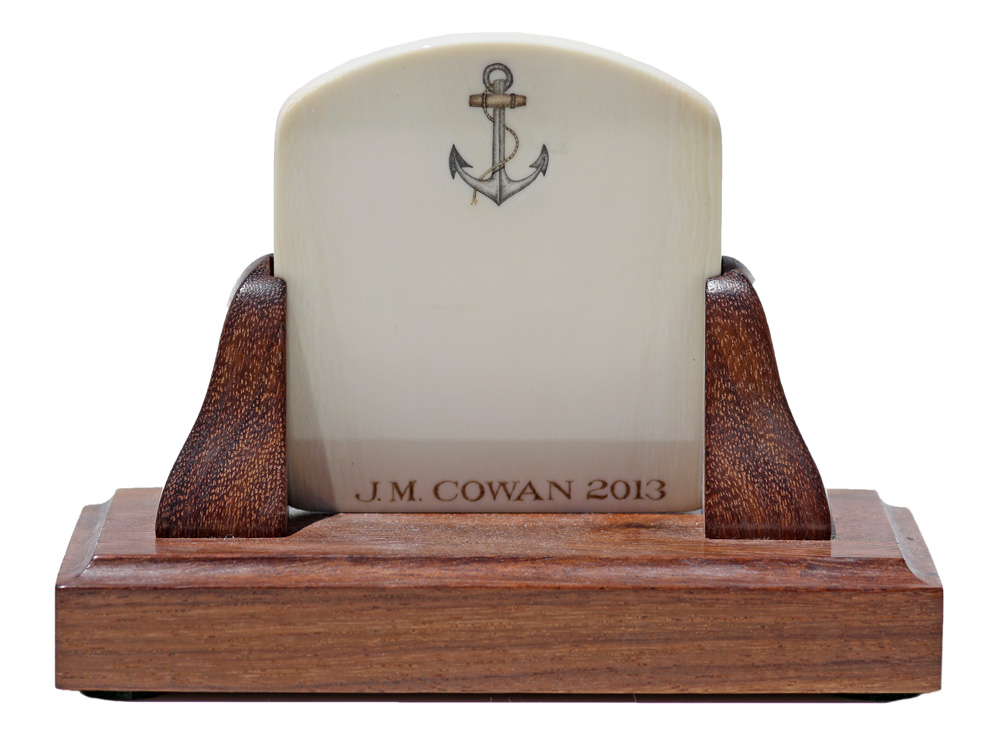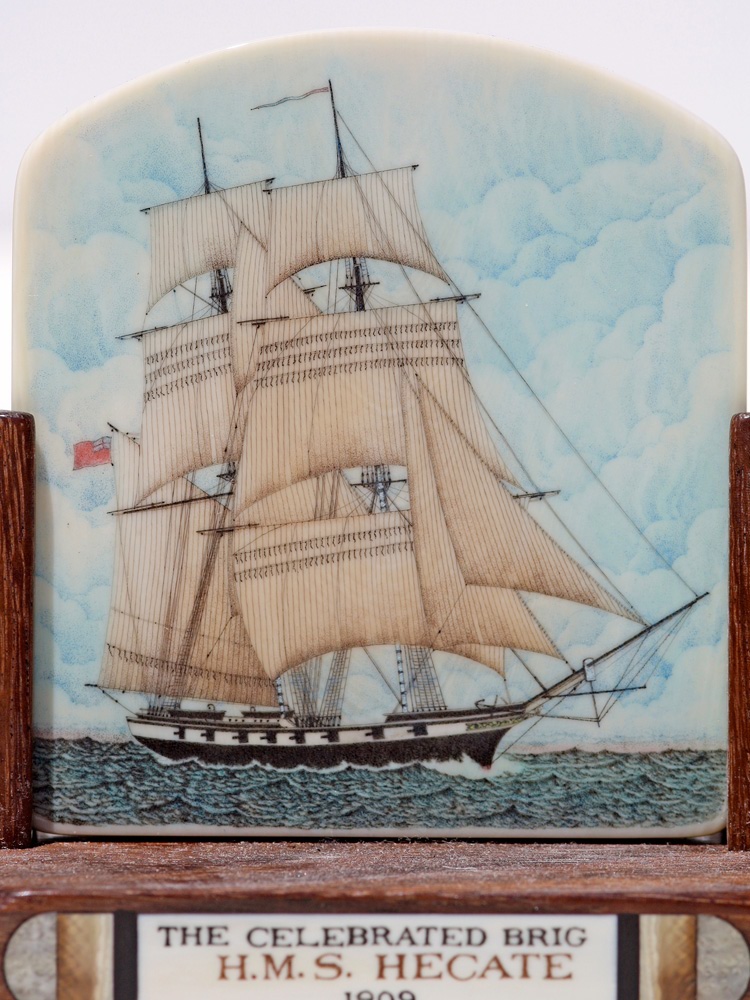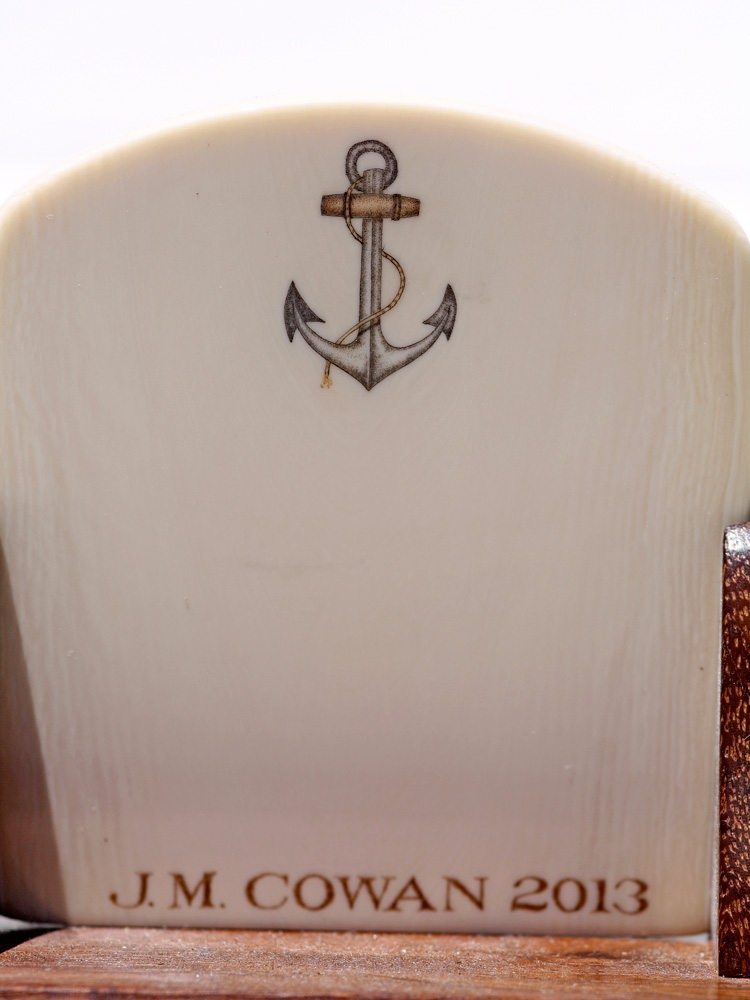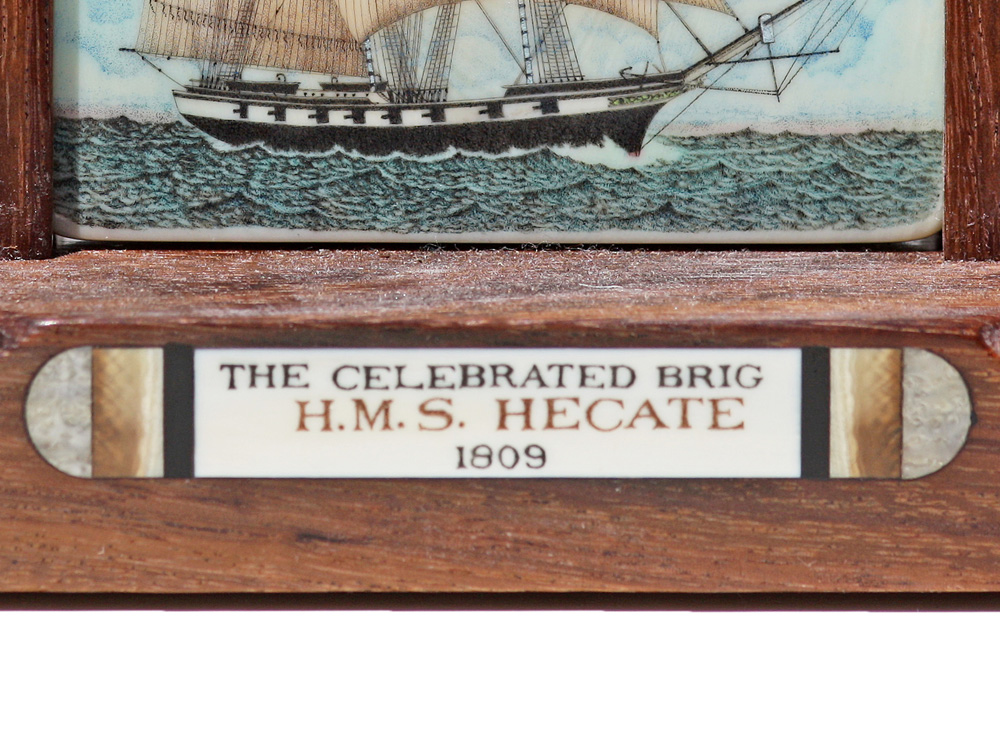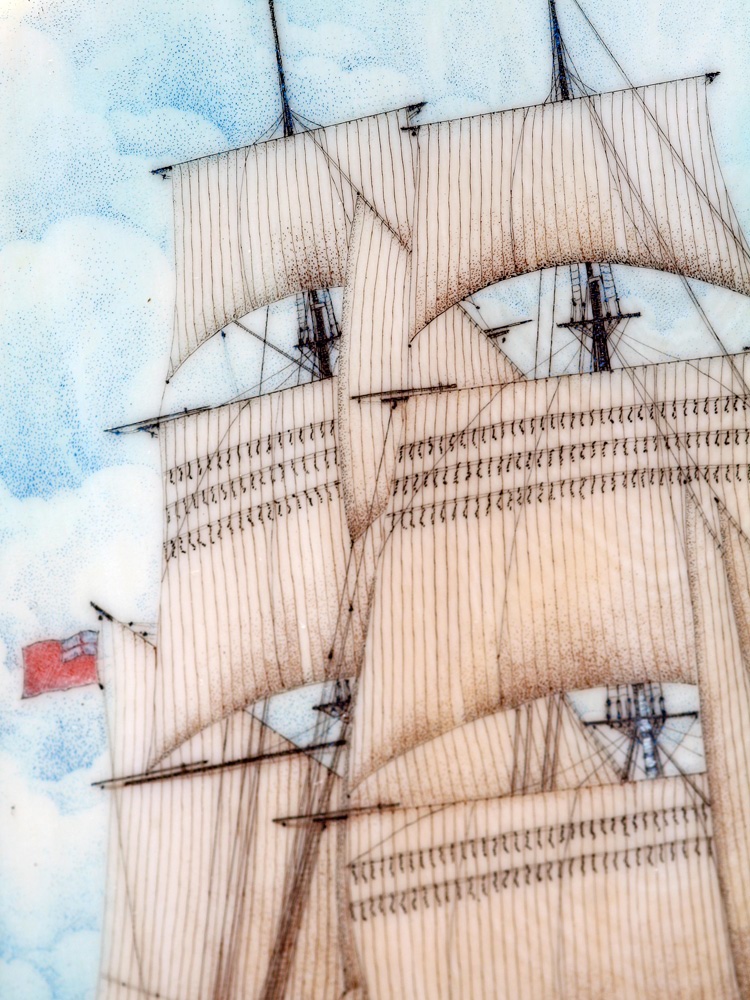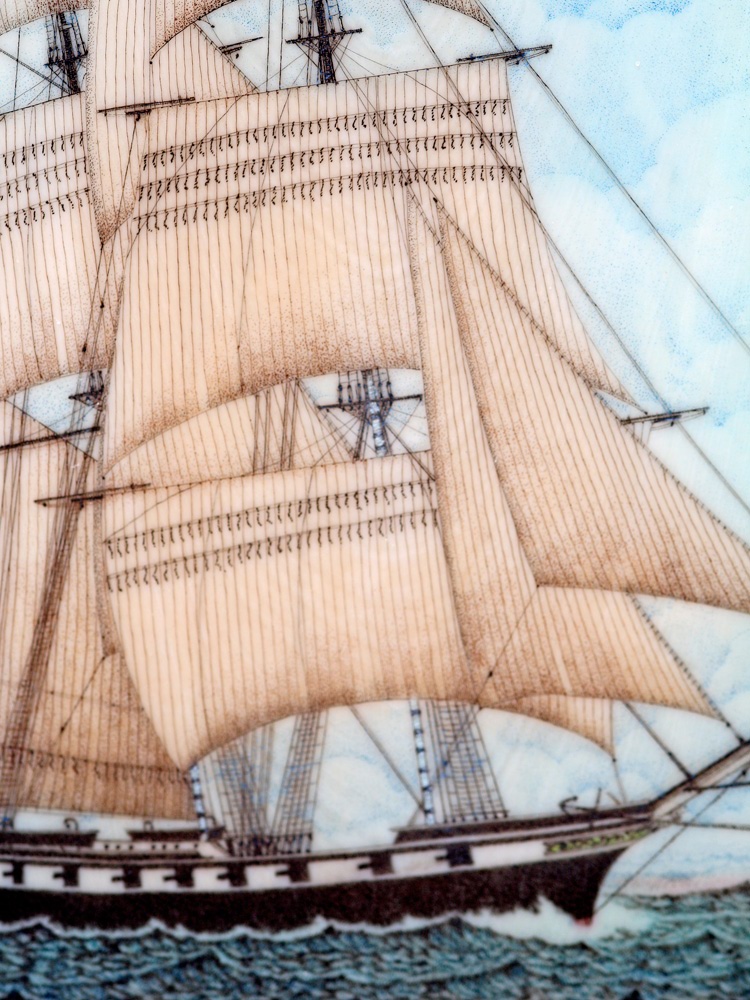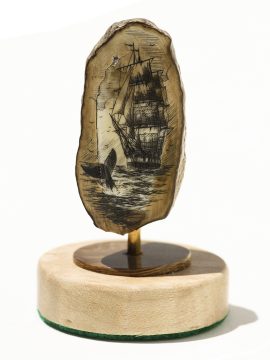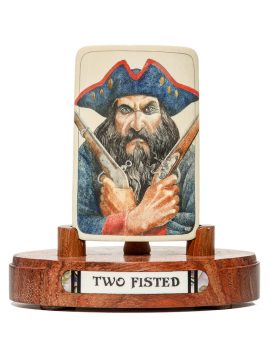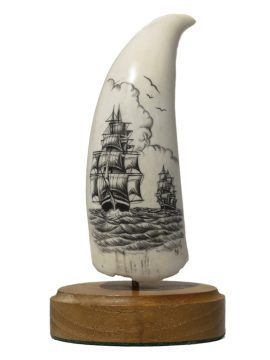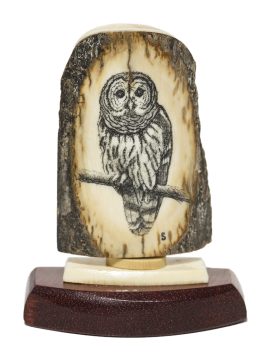The Celebrated Brig: H.M.S. Hectate 1809
$3,450.00
Color scrimshaw on pre-ban African ivory by Joel Cowan. Long recognized as the most precise ship scrimshander ever, Cowan’s work continues to impress everyone. His stipple work is in a class by itself. As far as his lettering, no one comes close. Cowan works directly from the actual plans of the ship and is completely accurate in his depiction. Cowan works exclusively for Scrimshaw Gallery and any scrimshaw collection, beginning or long time, should include several Joel Cowan pieces while they are available.
Information from internet:
HMS Hecate was a Royal Navy 18-gun Cruizer-class brig-sloop, built by John King at Upnor and launched in 1809. After serving in the British Navy, essentially entirely in the East Indies, she served in the Chilean Navy as Galvarino from 1818 until she was broken up in 1828.
Hecate was commissioned in 1809 under Commander William Buchanan. Commander Edward Wallis Hoare replaced him in October and sailed for the East Indies on 31 October. In 1810, Lieutenant George Rennie became acting commander and Hecate was detailed for service with the squadron under Admiral Albemarle Bertie engaged in the Invasion of Ile de France. In 1814 she would share in the prize money resulting from the capture of the island.
In 1811 she was under Commander Thomas Graham until July, when Commander Henry John Peachey assumed command. From 3 August she was part of the fleet involved in the invasion of Java, which ended with the surrender of Dutch and French forces on 16 September. For this service all of her crew who had survived to 1847 and chose to were entitled to claim the Naval General Service Medal with clasp “Java”. In 1815 Hecate also shared in the prize money arising out of the invasion.
Peachey was promoted to post-captain on 7 August 1812 and removed to Malacca. Lieutenant William Case may have followed Peachey as acting commander, but then the newly promoted Commander Case took command of Samarang, and Commander Joseph Drury transferred from Samarang to Hecate. At some point in 1812 pirates from the Sultanate of Sambas, in western Borneo, captured nine sailors from Hecate and killed or enslaved them, after cutting their hamstrings or otherwise mutilating them. In June 1813 Hecate participated in a punitive expedition against the Sultanate of Sambas.
Hecate sailed for Madras in January 1814 and her next commander, from 4 February 1814, was Commander John Allen. On 20 November 1815 command passed to John Reynolds.
Hecate arrived in Portsmouth on 17 August 1816, from Trincomalee, which she had left on 20 March. She had sailed via the Cape of Good Hope and Saint Helena. On 22 May 1817 the Admiralty offered Hecate, then lying at Portsmouth, for sale.
On 30 October 1817 the Admiralty sold Hecate to Mr. Parkin for £860. In Buenos Aires she was also known as the name Lucy. She was resold to the Chilean Revolutionary government, arriving in Chile on 9 November 1818 under the command of Captain Guise.[8] She served the new Chilean Navy as Galvarino, first under Captain Spry (until Admiral Thomas Cochrane dismissed him) and then under Captain Winter. On 2 October 1819 she was at the second attack on Callao where a lieutenant onboard was killed by Spanish fire. In 1821, while under the command of Captain I. Esmond, her crew mutinied and refused to go to sea until they had received their back pay and prize money.
She participated in the Freedom Expedition of Peru, but after the final confrontation between San Martin and Cochrane and the subsequent loss of many officers and seamen to the new Peruvian Navy, the Lautaro and Galvarino were sent back to Valparaiso to ease the demand for seamen.
Notice:
This scrimshaw is done on pre-ban African ivory. Since the passage of the CITIES Treaty in 1973, there has been no African ivory brought into the U.S. However, ivory that was in the U.S. prior to 1973 can be legally sold and shipped within the U.S. However, new legislation taking effect in 2016 restricts pre-ban African Ivory from being shipped interstate. It can only legally be shipped intrastate, (within the state). All of our pre-ban ivory is located with our associate in the state of Florida. It can be purchased directly from our website and shipped only to an address within the state of Florida. If one has a relative, trusted friend or business associate within the state of Florida, we can ship to that specified address in order to comply with the new Federal legislation. The scrimshaw can then be forwarded it to you and everyone complies with the law. Any questions email or call us.
In stock

